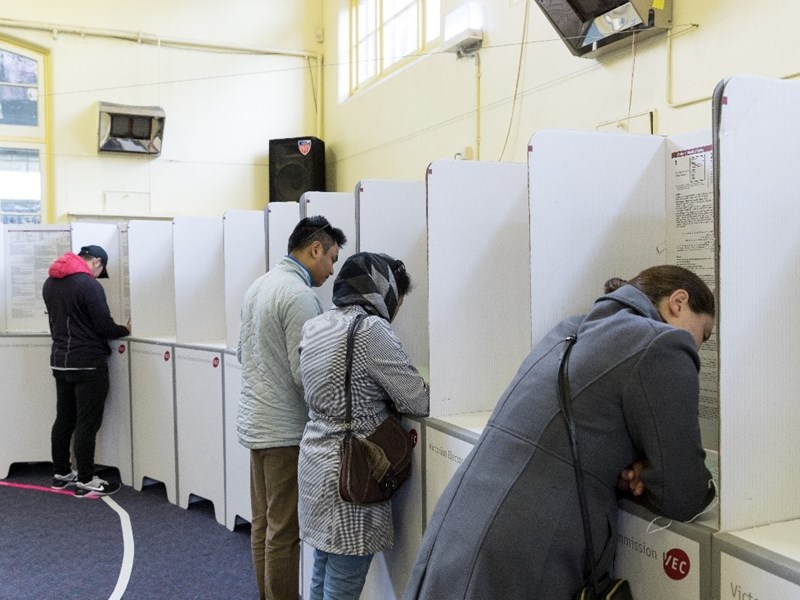Alternative elections: What happens when someone leaves parliament?
17 October 2023

When a seat in parliament is vacated during a parliamentary term it creates what is known as a casual vacancy. There are three potential election methods used by the Victorian Electoral Commission depending on how the seat has been vacated.
With the Member for Warrandyte stepping down in July and the resignation of the Premier at the end of September from the Legislative Assembly, and an upcoming vacancy in the Legislative Council, several seats have been vacated. The vacant seats in the Legislative Assembly has led to a reshuffle of Cabinet and the opposition frontbench, but how do the vacated seats get filled? What happens next?
By-elections
The resignation of the Premier will lead to a by-election in the district of Mulgrave, following on from the by-election held in August when the Member for Warrandyte resigned earlier this year.
By-elections are initiated when a member of the Legislative Assembly resigns or cannot complete their term. Only constituents of the affected district cast their votes to choose a new Member of Parliament for their electorate.
To initiate this process, the Speaker of the Legislative Assembly must issue a writ to the Victorian Electoral Commission (VEC). A writ is a legal document that authorises the by-election and provides a concise timeline. The writ for the Warrandyte election, for example, outlined a two month timeline. Constituents of that district have one week to update their details on the electoral roll in preparation for election day.
Similar to general elections at all levels of government, voting is mandatory, and individuals can vote at a polling station on the designated day, visit an early voting centre, or request a postal vote. Typically, within 21 days after the election day, the writ is returned to the Speaker, revealing the name of the elected candidate.
The outcome of the by-election may alter the proportion of party members in parliament if the incoming candidate belongs to a different party than the outgoing one. This, in turn, modifies the composition of parliament.
There is always a possibility if there is a minority government—the government forms with the support of the crossbench—and the government loose a seat in a by-election, it could result in a change in government. However, a change in government during a parliamentary term hasn’t happened since the strengthening of the party system in the 1950s, but that wasn’t due to by-elections, but rather by changes to political parties.
Supplementary elections
A supplementary election is held when a lower house election fails. Such circumstances arise when:
- a candidate passes away between the nomination deadline and the election day
- if the successful candidate passes away after the election but before being officially declared elected, or
- when no candidates are nominated.
A separate writ is issued for another election. However, the electoral roll that was prepared for the original election is used.
Appointments
In the event of a member from the Legislative Council resigning or being unable to complete their term, they are replaced by their party rather than through a by-election or supplementary election process. The party is required to nominate a new person to fill the position, and that person is appointed in a joint sitting of both houses of parliament. This process is known as an appointment.
If the vacating member was an independent (i.e. did not belong to a political party), the joint sitting will elect a new member. In this case, the chosen individual cannot have held membership in a political party in the past five years and must have lived in the region they will be representing for a minimum of 12 months. There is no joint sitting if the vacancy happens within three months of an election.
History of alternative elections in Victoria
In the last 10 years, there have only been six by-elections and one supplementary election.
By-elections
August 2023 – Warrandyte District
November 2018 – Northcote District
October 2015 – Polwarth & South-West Coast Districts
March 2015 – Gippsland South District
April 2013 – Lyndhurst District
Supplementary election
January 2023 – Narracan District
The VEC have a breakdown of the by-election and supplementary election results from 2007 to present.
Whilst there have only been seven examples of alternative elections in the last 10 years, they used to be a frequent occurrence, especially in the early days of the Victorian parliament. Alternative elections were triggered for a variety of reasons, such as when members forfeited their seat to run for federal parliament.
You can also visit the VEC for a more detailed History of elections in Victoria or further information about different types of elections, including local council elections.